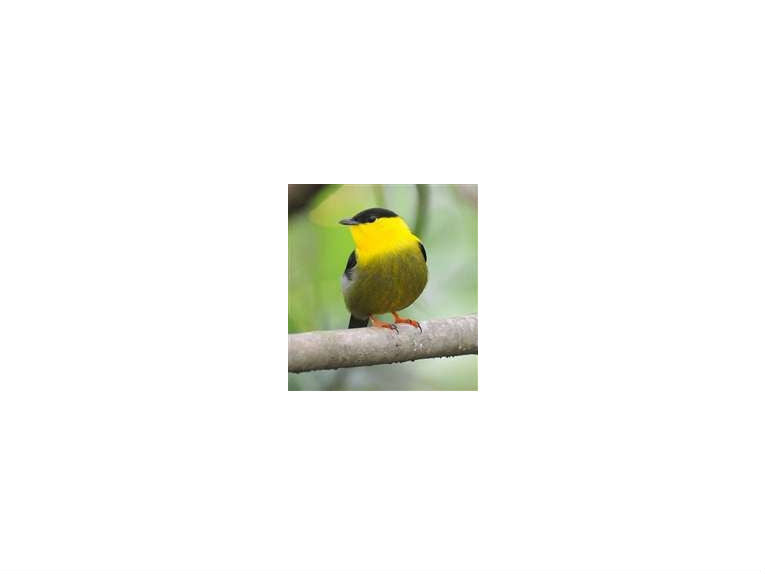How far would you go to impress a potential mate? The golden-collared manakin performs an extraordinary courtship dance of jumping and aerobatics in its South American rainforest home where speed is the key to finding a mate.
"The male jumps like he's been shot out of a cannon," said study co-author Barney Schlinger, professor and departmental chair of integrative biology and physiology and a professor of ecology and evolutionary biology at UCLA. "It's exquisite. He sails like an acrobat and lands perfectly on a perch, like a gymnast landing a flawless dismount. Not only is there power to his muscle contractions but incredible speed as well."
"The females prefer the males that perform the elements of the dance faster and demonstrate better motor coordination," said lead author Julia Barske, a UCLA graduate student and doctoral candidate in ecology and evolutionary biology. "Females prefer more active males that do more courtship activity."
And, it's a matter of very fine margins for these spectacular little birds - a difference of just 30 milliseconds can be the difference between success and failure for a male and his genes.
The findings will be published in the print edition of Proceedings of the Royal Society B, a leading British journal for biological sciences research, and are currently available in the journal's advance online edition.
The ritual also puts extraordinary strain on the little birds, whose heart rates more than double to 1,300 beats-a-minute.
For the females, who have larger visual processing areas in their brains than the males, it's a cold calculation of picking the strongest. Males dance for their would-be mates during a six month breeding season when females take their pick from groups of between four and six suitors.
Despite their size, golden-collared manakins are extraordinarily successful, says Schlinger.
"Here is a very small, 17-gram bird that is living 14 years in the rainforest, telling everybody where they are," Schlinger said. "They are there year after year."
(Top Image: A male golden-collared manakin. Credit: Julia Barske/UCLA Life Sciences)










